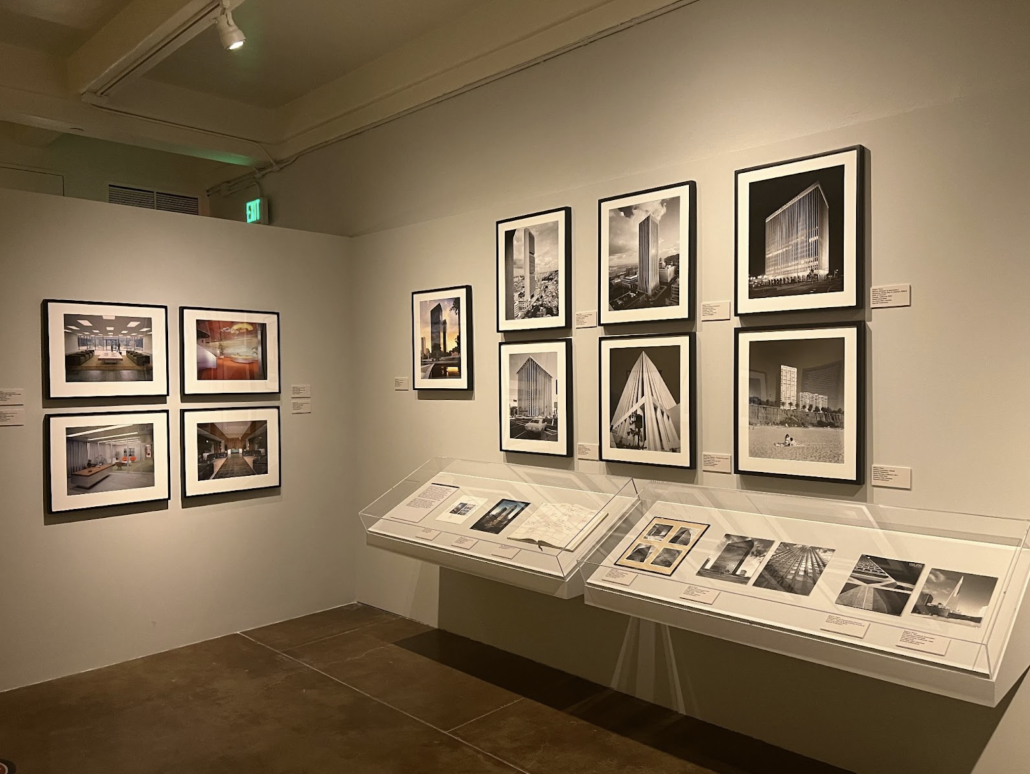PAM exhibit celebrates Wayne Thom

Primarily seen in print magazines, architectural photography is not the first medium that comes to mind when viewers think about museum galleries, but a new exhibition at USC PAM and its guest curator are seeking to change that narrative.
The USC Pacific Asia Museum opened “After Modernism: Through the Lens of Wayne Thom” Oct. 14. The exhibition is curated by Emily Bills, a leading scholar of Wayne Thom’s work and author of “Wayne Thom: Photographing the Late Modern.”
In 2015, the university acquired Thom’s collection of over 250,000 works as a part of USC Libraries Special Collections. In his over 50-year career, Thom became a prominent architectural photographer, capturing over 2,600 structures across the Western United States, Hawaii and Southeast Asia.
His practice largely revolved around Los Angeles and surrounding areas in Southern California and focused on Late Modernist buildings, exemplified by accentuated minimalism, novel materials and dynamic forms.
Early in his career, Thom was commissioned to photograph buildings on USC’s campus, including the William L. Pereira & Associates’ Vivian Hall and Edward Durell Stone’s Center for International and Public Affairs. Included in this PAM showing, these two pieces demonstrate Thom’s emphasis on linear structures and visible contrasts, qualities integral to many Late Modernist architectural designs.
Thom himself did not adhere to a specific style; instead he approached each project with a unique perspective and appreciation for the space around the design and the architectural firm’s initial vision. He often went to great lengths in pursuit of the perfect angle from which to capture these various buildings.
“I use a helicopter to illustrate these portraits. I call it a portrait of the building, and also indicate the location, the neighborhood, the context, and relationships to other buildings,” Thom said.
One specific project the exhibition spotlights is Thom’s work regarding the CNA Park Place Tower in Los Angeles. This building was the first in L.A. to utilize mirror glass skin, an innovative technique originally developed in the 1960s.
“It’s a non-existent building. It’s supposed to merge into the sky and only reflect what’s in front of it. The building is merely a frame of the reflection, which is the subject and that was very, very exciting to me,” Thom said.
For this 1971 photograph, Thom won his first award, the PPG Architectural Photographer Invitational.
The show also included a digital interactive component, titled “Wayne Thom 50/50.” This section of the exhibit includes what Thom personally views as the most important projects of his career. Located in the last room of the show on a touchscreen, “Wayne Thom 50/50” offers viewers the chance to interact directly with his archive and explore for themselves.
The exhibition is a triumph for architectural photography as an art form, a medium whose aesthetic value is often overlooked.
“At this point, we, of course, think of photography as an art, but we don’t necessarily think of architectural photography as an art. We think of it more as sort of a professional branch of architecture itself,” Bills said. “But architectural photographers are artists. They have a subjective perspective on the building and how it should be presented. And so, to be able to see his photographs blown up and beautifully printed and exhibited, I think, can bring attention to the discipline itself.”
Similarly, the exhibit was constructed out of a desire to expose viewers to the timely issue of preservation facing the buildings Thom photographed in the late 20th century.
“We’re also aware that many of these buildings that he photographed — of which a lot of them are canonical, spectacular buildings — but particularly those from the ‘70s and ‘80s, at this stage are really either in need of conservation, or they’re threatened with demolition,” Bills said. “So we were hoping that the exhibition could also bring awareness and support to help save this architectural heritage and bring attention to buildings from that time period.”
“After Modernism: Through the Lens of Wayne Thom” is on view until January 22, 2023.

